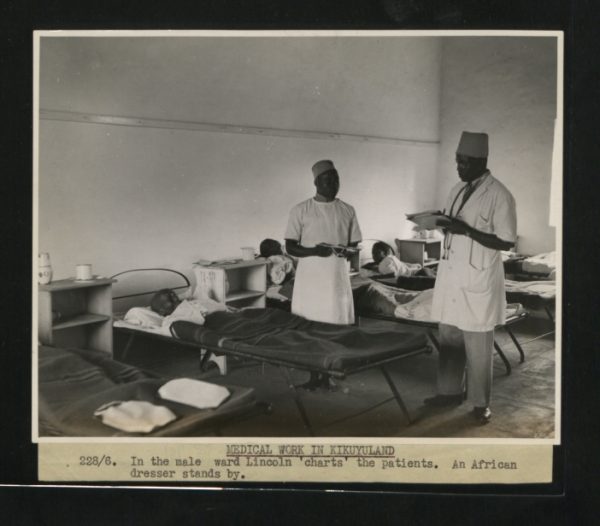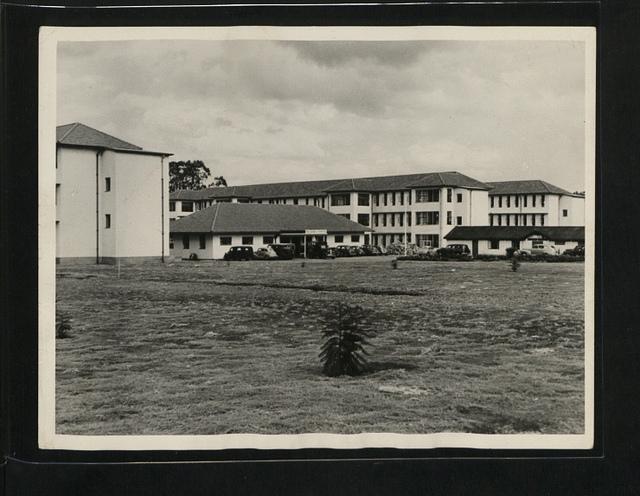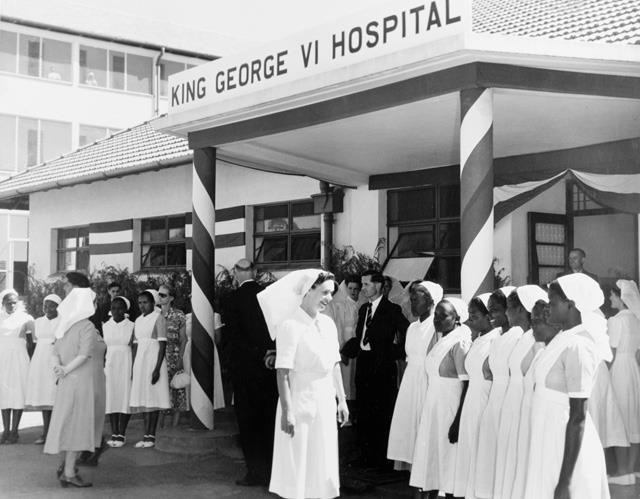

KNH has had three names since its establishment in 1901. It was originally called the Native Civil Hospital & had a bed capacity of 40. It is recorded that in 1908, there were 45 beds & that 712 inpatients and 6,425 outpatients were seen.
A more modern part of the hospital, 300 bedded medical wing was completed in 1939. Extensions were made in 1951 & 1953 with the completion of 300 bedded surgical wing & Ismail Rahimtulla Wing to accommodate patients from the Asian Community, increasing bed capacity to 600.
Feb 6, 1952, after a long illness, King George VI of Great Britain and Northern Ireland died in his sleep at the royal estate at Sandringham aged 56. It is in 1952 that the Native Civil Hospital was renamed the King George VI Hospital. When King George VI died, his daughter, Queen Elizabeth (25), was in Kenya on a royal tour.
In 1957, the Infectious Disease Hospital was added with 234 beds, and in 1965, the British Military Hospital in Kabete was taken over as the Orthopedic Unit. Later a Dental Wing was added. Orthopaedic patients were managed at the British Military Hospital in Kabete. Trauma and acute cases were treated at KNH. After the construction of the present KNH, the Orthopaedic Unit was moved to KNH and Kabete Unit was handed back to the military.
After independence in 1963, King George VI Hospital was renamed KNH & was declared a national teaching hospital. KNH was envisioned as having 3 main functions:
• Serve as the national referral hospital
• Provide facilities for teaching
• Provide facilities for research
An expansion program was carried out in three phases which included the main hospital, the clinical science blocks, the medical students’ hostels and the hospital service blocks.
Until 1967, KNH had a casualty department which handled all emergency cases. There was also an admissions procedure operated by senior staff & handled patients who had been referred for further specialized care. This made it possible to regulate admissions & outpatient workload.
After 1967 it was decided to have filter clinics to screen patients for admission or referral to the specialized clinics. A number of peripheral health units were taken over to become part of KNH to facilitate this process.
It was renamed Kenyatta National Hospital — after Jomo Kenyatta — following independence from the British. It is currently the largest referral and teaching hospital in the country.
KNH became a State Corporation in 1987. KNH has 50 wards, 22 out-patient clinics, 24 theaters (16 specialized) and Accident & Emergency Department with over 6000 staff members. Out of the total bed capacity of 1800, 209 beds are for the Private Wing.
Fast forward to 2022, KNH has a bed capacity of 1,800, 6,000+ staff members, 50 wards, 22 out-patient clinics, 24 theaters (16 specialized) and Accident & Emergency Department.
KNH is the biggest referral hospital in East & Central Africa. Powered by Kenyans. KNH is 120+ years old.



